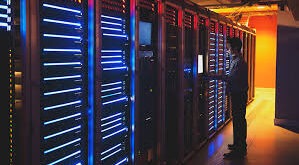The world’s reliance on smart video is increasing. As per a recent industry report1, the video surveillance market is projected to grow from USD 48.7 billion in 2022 to USD 76.4 billion by 2027. From crime prevention to traffic management, smart video has become a key component in our daily lives.
A well-executed smart video or CCTV system in business premises may provide many benefits in addition to security coverage. Here are some of the reasons to update or install CCTV systems.
Elementary, My Dear
CCTV or smart video can be an extremely effective security solution that works both as a deterrent and as evidence in solving a crime. Equipped with artificial intelligence (AI), today, smart video cameras can even identify and detect irregular behaviour, which might be ignored by the human eye. This can help in avoiding the occurrence of a dangerous activity. Moreover, it is almost impossible for the human eye to cover large areas, which can be very effectively done through cameras, and as a result, it can potentially offer better security.
Better Employee Safety
The last couple of years have given rise to new use cases, such as thermal monitoring, crowd counting, personal protective equipment (PPE) detection, and air quality monitoring. Cameras that can detect social distancing and heat-detection are being installed. Moreover, as employees look at hybrid work models, it is important that organizations provide a safe work environment. As a result, organizations are investing in environmental sensors to measure air quality, including carbon dioxide (CO2) levels, in the workplace.
Trend Spotting
Shop or retail layouts can be made more effective and attractive for customers, by analyzing the video footage of the retail or shop floor. The in-store activities can help identify trends. For example, by developing heat maps, a retailer can find out the number of people visiting, or the amount of time spent in a certain aisle or at a product display rack. This can help the store management take more informed decisions on a store or retail layout, which can potentially help them become more profitable.
But it all Depends on Data
Irrespective of a setup style, CCTV and smart video cameras generate a huge amount of data. This is because the video quality is getting better and cameras more feature rich. The effectiveness of CCTV is entirely dependent on the data it collects. Therefore, if the video recording is limited due to the lack of sufficient storage, then deploying a CCTV or smart video system is pointless.
Different Storage for Different Needs
Different kinds of storage types are needed depending on the varied requirements. On-camera storage must be high-performance to analyze data in real-time and it should be able to withstand extreme weather conditions. The use of microSD™ cards for onboard camera storage is increasing, both as primary storage and for backing up cloud-based systems. The microSD cards are often placed in hard-to-reach areas, making them less accessible for service. Therefore, these should offer longevity and reliability. Today, up to 1TB microSD cards are available, such as the WD Purple® microSD card, engineered specifically for surveillance.
Additionally, as many of these smart video systems operate 24/7, all year round, storage technology should be able to keep up with that. CCTVs need a surveillance drive, which is designed to focus mainly on writing data. General desktop HDDs are typically not tested for the high write workloads, such as supporting multiple video streams, of surveillance HDDs. For example, the Western Digital WD Purple portfolio is built from the ground up for video surveillance.
(Attributed to Khalid Wani, Senior Director – Sales, India, Western Digital)
 Newspatrolling.com News cum Content Syndication Portal Online
Newspatrolling.com News cum Content Syndication Portal Online







